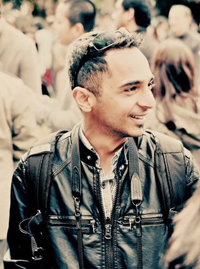Story of a Crowd Artist: Sallu Kazi
Sallu Kazi is the Crowd Department Supervisor at Scanline VFX where he works with Golaem on several top notch projects. He has worked in many countries, for various studios, with almost all commercial crowd software which ever existed. Today, he shares his experience about being a Crowd Artist.
How did you become a crowd artist?
It all started when I was working as a pipeline td in a studio, I got an opportunity to evaluate massive software for a project, though we never got to use it, I had got a good hang of it. Then on the first day of my next job as a lighting td, I was assigned to evaluate massive software again for a project after they knew I had evaluated it before. This time it went well and we started using it on the project and a few more. After that I moved on to other roles as lighting td and lighter. I completely got involved in crowds when I got an offer from Animal Logic, Sydney as crowd td. Since then there has been no looking back and one opportunity led to another. It’s almost been 11 years that I have been working in crowds at various studios with different pipeline and crowd software.
Could you share a few projects you have worked on?
Zack Snyder’s Justice League, Mandalorian (Season 2), Bloodshot, Addams Family, Black Panther, Thor: Ragnarok, King Arthur: Legend of Sword, Now You See Me 2, Dracula Untold, Walking with Dinosaurs 3D, Happy Feet Two, Sucker Punch.
Given your experience in crowds, which trends have you seen emerge over time, and how do you see the future for crowds?
Lately there has been an increase in crowd requirement. Before there would be one show requiring crowds per studio and per year,. Now there is so much demand for crowds, almost 3-5 shows per year per studio. Also not to mention the tools are enabling the crowds to be more up close to the camera with facial expression, cloth and hair.
I think the future would be more towards getting the crowds into realtime engines, not only for virtual production and movies but also for drive simulations used for self driving cars & robots. With more and more machine learning models being presented every year, we can definitely see the crowd tools aligning towards these models for deformations, smart facial animations, automatic locomotion leading to meta crowds!!
How did the Covid crisis affect film production and the way you are going to work with crowds?
Nothing much has changed in terms of working in crowds, what has changed is the demand for crowd across many projects since covid restrictions affected the film productions.
Would you recommend CG artists to get in crowds? How? Which skills should they develop?
Working in Crowds is almost like it’s own mini production, it deals with models, lookdev, rigs, animation, layout, simulation, cfx, lighting and rendering. So having a complete understanding and/or experience in any of the production process would definitely help in becoming a good crowd artist. Good problem solving skills is always a big plus.
Anything else you would like to share?
Avoid Real Crowds and Stay Safe :)
Want to become a Crowd Artist?
We are running a FREE training program. Join the Golaem Academy!

